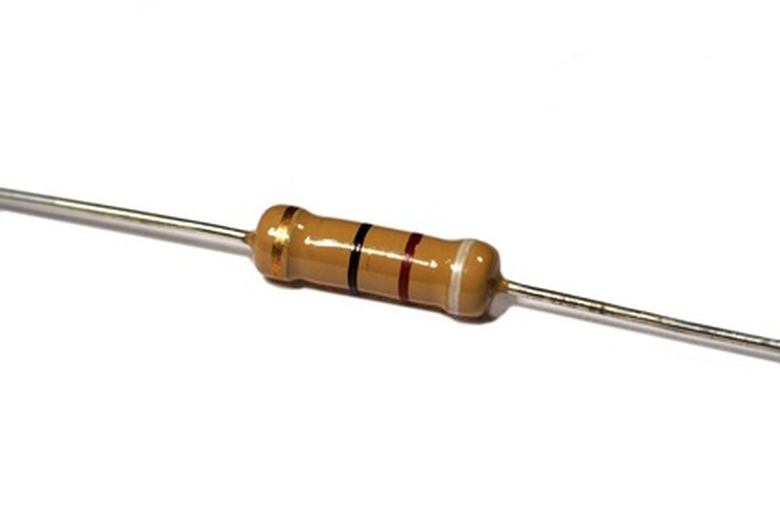How To Reduce 12 Volts To 9 Volts
There are a variety of reasons you might want to change 12 volts to nine volts. Perhaps you have 12-volt batteries, but power tools that run off nine volts. Perhaps you have a solar panel that produces 12 volts and you need to charge nine volt rechargeable batteries with it. Whatever your reason, you can step the voltage down without the trouble of finding a different sized power source.
Step 1
Measure the resistance of the device or circuit that you will be powering with nine volts. Use the multimeter on its resistance setting to do this. This resistance, called the "load resistance," will help you put together a voltage divider.
Step 2
Select a resistor, any resistor. The actual value of its resistance doesn't matter, as only the ratios of the resistances in a voltage divider determine the output voltage.
Step 3
Multiply the resistance of the resistor you chose by the load resistance. Divide the result by the sum of the load resistance and the random resistance you just selected. The result is the parallel resistance of these two resistances.
Step 4
Divide the parallel resistance by three. The result will be the value of the second resistor you need for your circuit. If you cannot find a resistor with this value, then try calculating the parallel resistance of your load with a different randomly selected resistor.
Step 5
Solder both resistors into an empty circuit board by touching the hot soldering iron and the solder to the resistor legs where they meet the circuit board. It does not matter what way the resistors are facing. Connect one leg of the first resistor with one leg of the second resistor by touching the iron and solder to both legs at once. Attach one terminal of your 12-volt battery to the unconnected leg of one resistor and the other battery terminal to the unconnected leg of the other resistor. Connect your load circuit or tool to the two legs of the resistor you chose at random. The load will now receive nine volts from your 12-volt battery or other power source. The other three volts are dissipated as heat on the other resistor.
Things Needed
- Multimeter
- Selection of different valued resistors
- Calculator
- Empty circuit board
- Soldering iron
- Solder
TL;DR (Too Long; Didn't Read)
Resistors have colored bands on them that show how much electrical resistance they have.
Warning
Do not touch any bare metal on the circuit when power is flowing through it. This could result in an electric shock, which could prove to be dangerous. If your circuit starts getting hot, your load circuit is drawing too much current. Rebuild the circuit with higher resistances.
Cite This Article
MLA
Thompson, Jason. "How To Reduce 12 Volts To 9 Volts" sciencing.com, https://www.sciencing.com/reduce-12-volts-9-volts-7315043/. 24 April 2017.
APA
Thompson, Jason. (2017, April 24). How To Reduce 12 Volts To 9 Volts. sciencing.com. Retrieved from https://www.sciencing.com/reduce-12-volts-9-volts-7315043/
Chicago
Thompson, Jason. How To Reduce 12 Volts To 9 Volts last modified March 24, 2022. https://www.sciencing.com/reduce-12-volts-9-volts-7315043/
